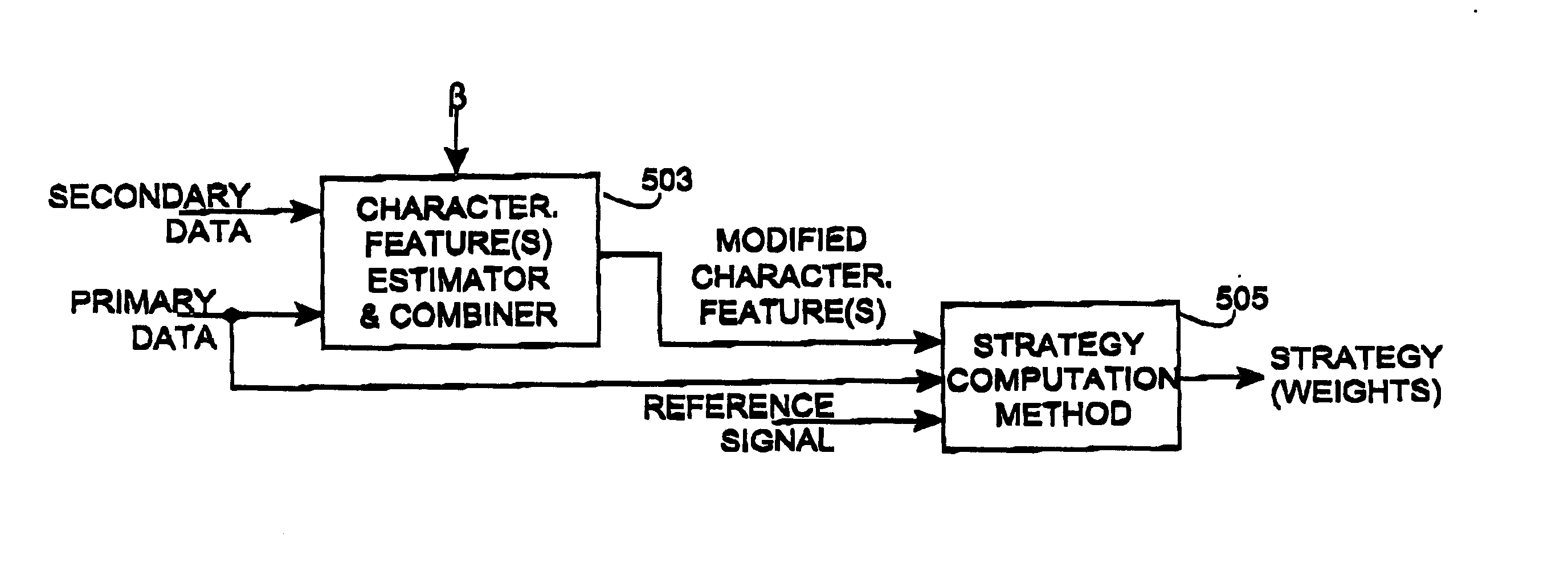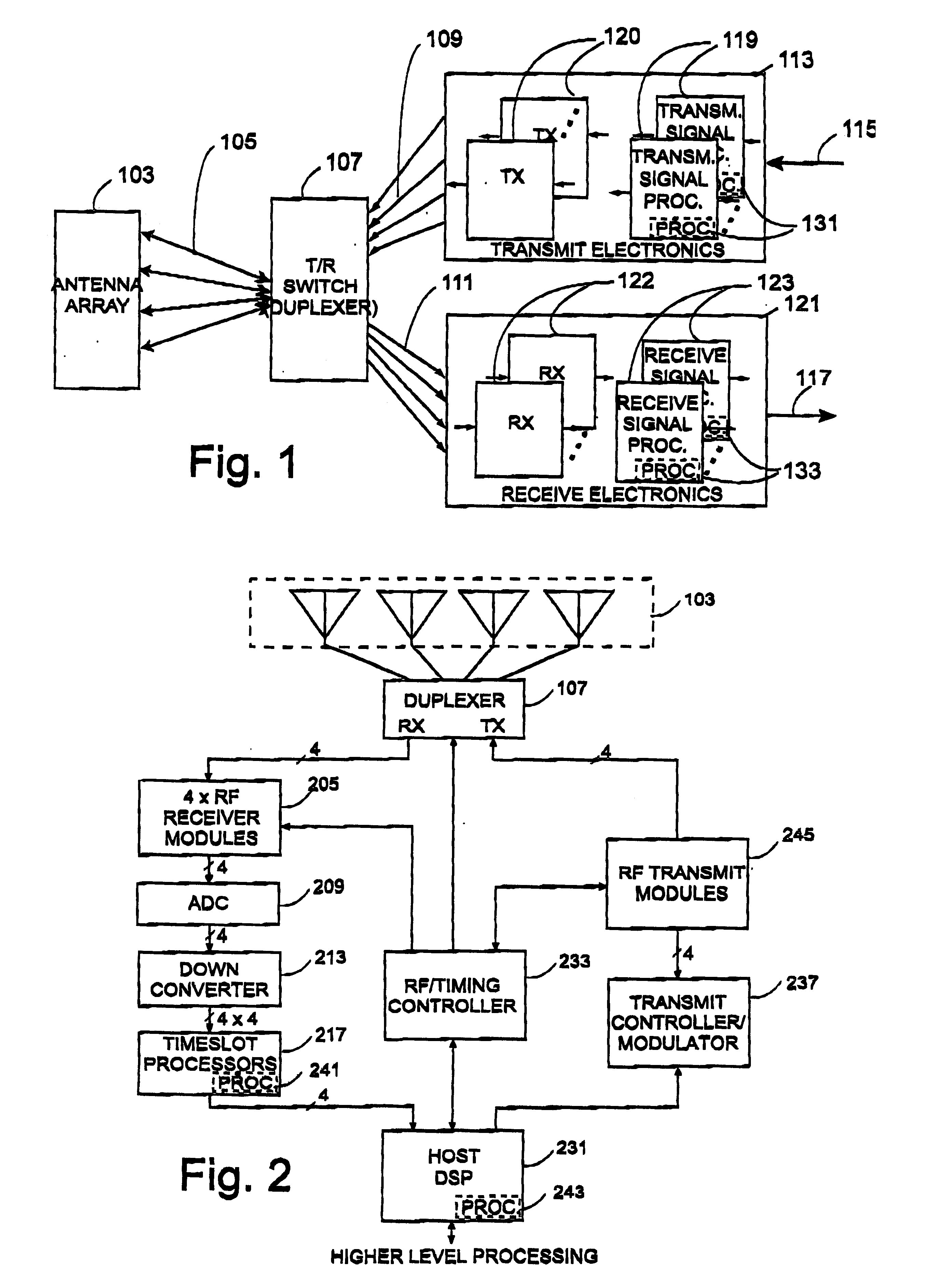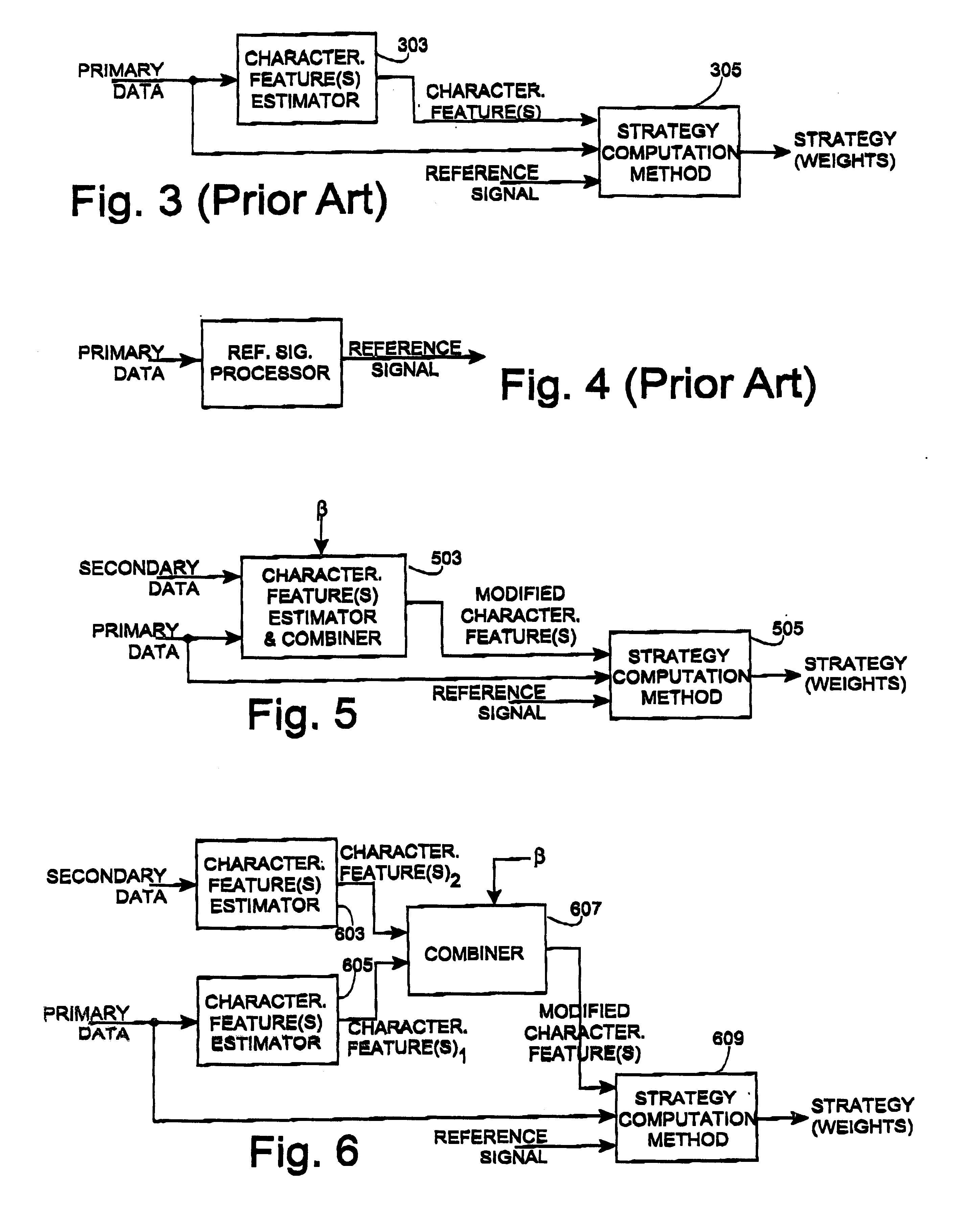Apparatus and method for beamforming in a changing-interference environment
a technology of interfering environment and apparatus, applied in the field of apparatus and method for beamforming in a changing interfering environment, can solve the problems of high computational burden, significant degraded quality of such a weight set, and limited methods, and achieves modest computational requirements, improves performance, and responds quickly and robustly
- Summary
- Abstract
- Description
- Claims
- Application Information
AI Technical Summary
Benefits of technology
Problems solved by technology
Method used
Image
Examples
Embodiment Construction
Adaptive Smart Antenna Processing
The invention is directed to a processing method for altering the transmit or receive weights used by a communication station to define a transmitted signal or to process a received signal in order to take into account the presence of a changing interference environment, and apparatus for implementing the same. The invention may be implemented in a communication station that includes a receiver, an array of antennas and means for adaptive smart antenna processing of received signals. The invention may also be implemented in a communication station that includes a transmitter, an array of antennas, and means for adaptive smart antenna processing of transmitted signals. In a preferred embodiment, the communication station includes a transceiver and the capability of implementing both uplink and downlink adaptive smart antenna processing.
When receiving a signal from a subscriber (remote) unit, the signals received by each of the antenna array elements a...
PUM
 Login to View More
Login to View More Abstract
Description
Claims
Application Information
 Login to View More
Login to View More - R&D
- Intellectual Property
- Life Sciences
- Materials
- Tech Scout
- Unparalleled Data Quality
- Higher Quality Content
- 60% Fewer Hallucinations
Browse by: Latest US Patents, China's latest patents, Technical Efficacy Thesaurus, Application Domain, Technology Topic, Popular Technical Reports.
© 2025 PatSnap. All rights reserved.Legal|Privacy policy|Modern Slavery Act Transparency Statement|Sitemap|About US| Contact US: help@patsnap.com



